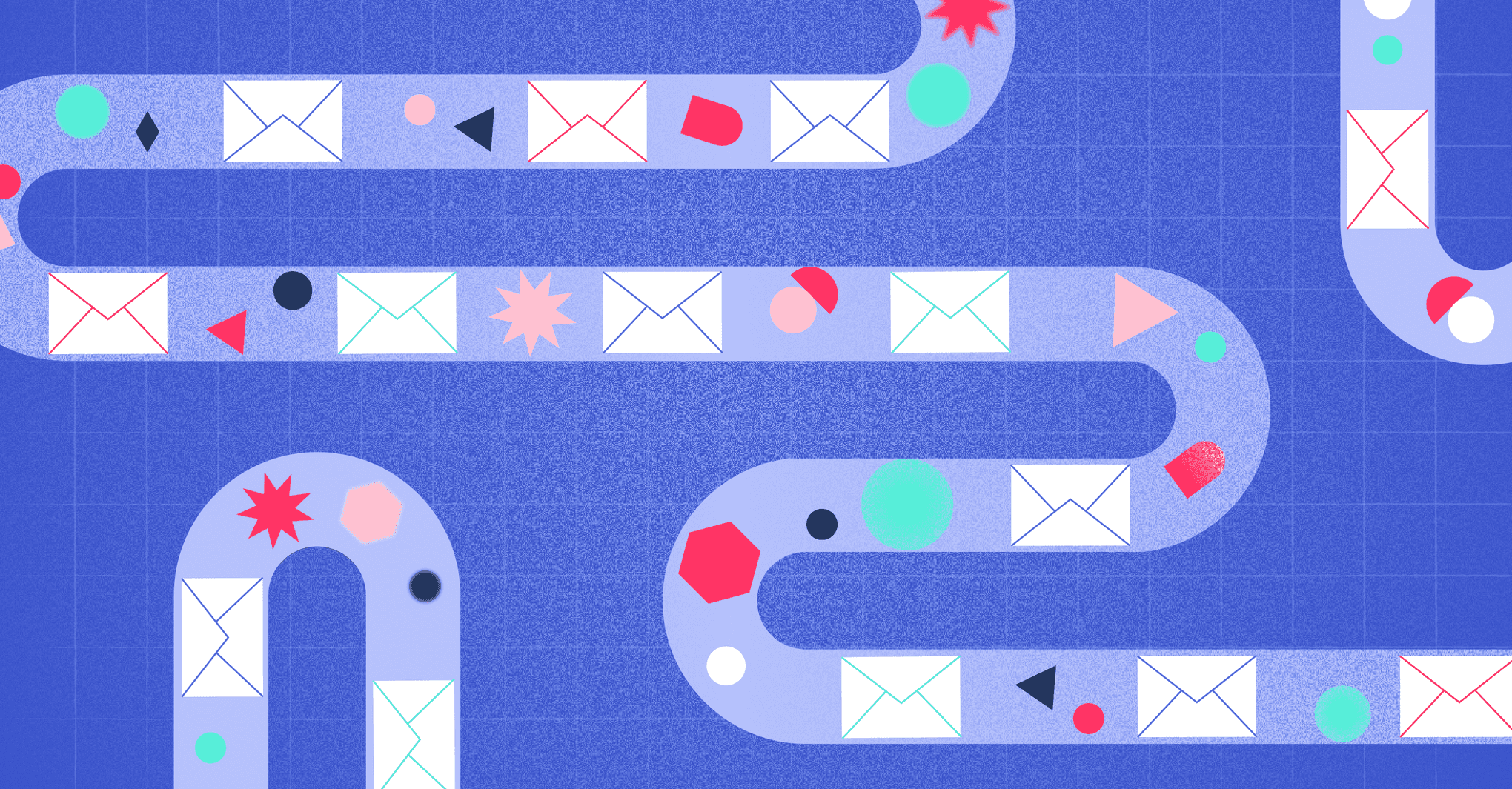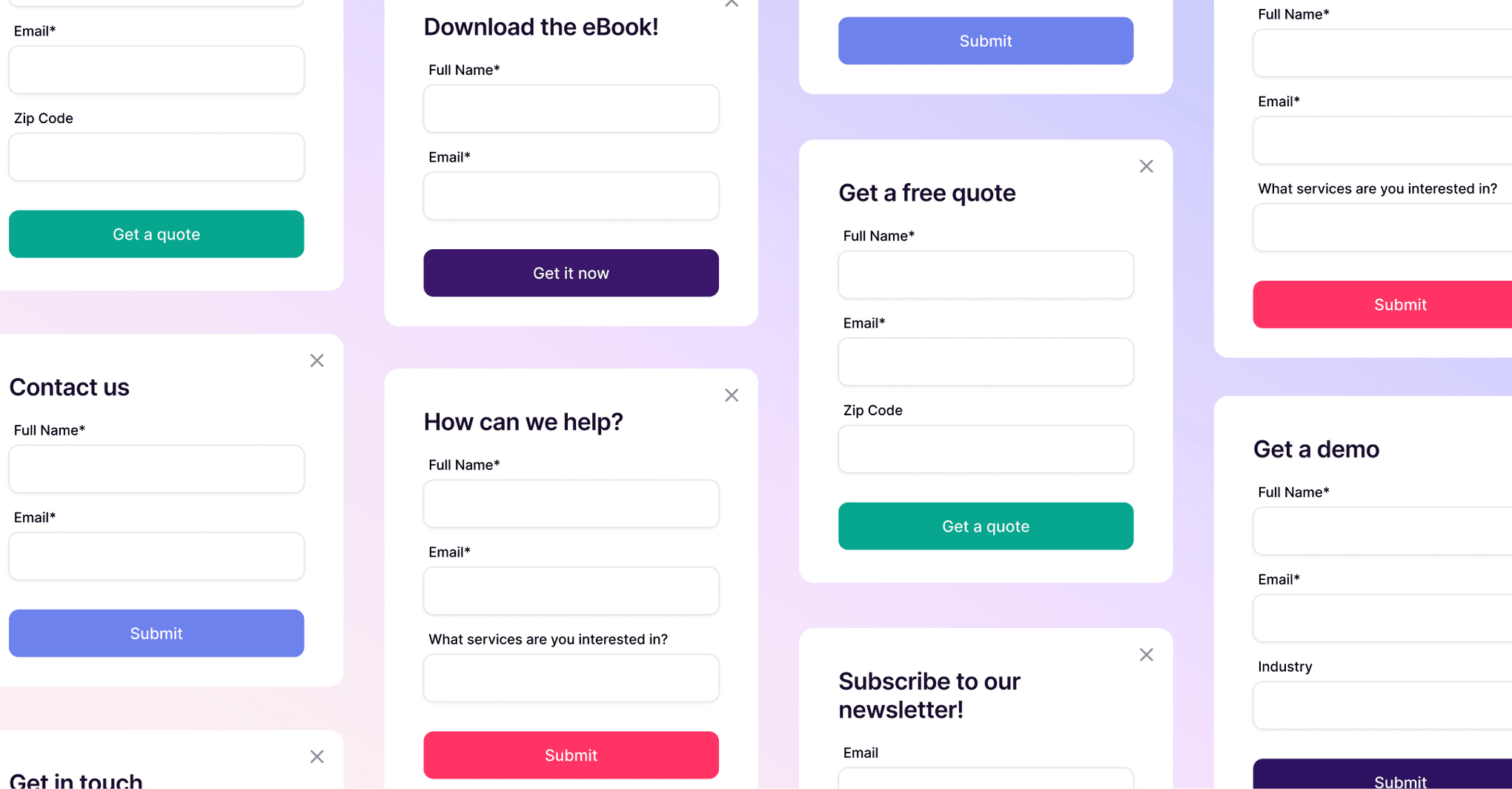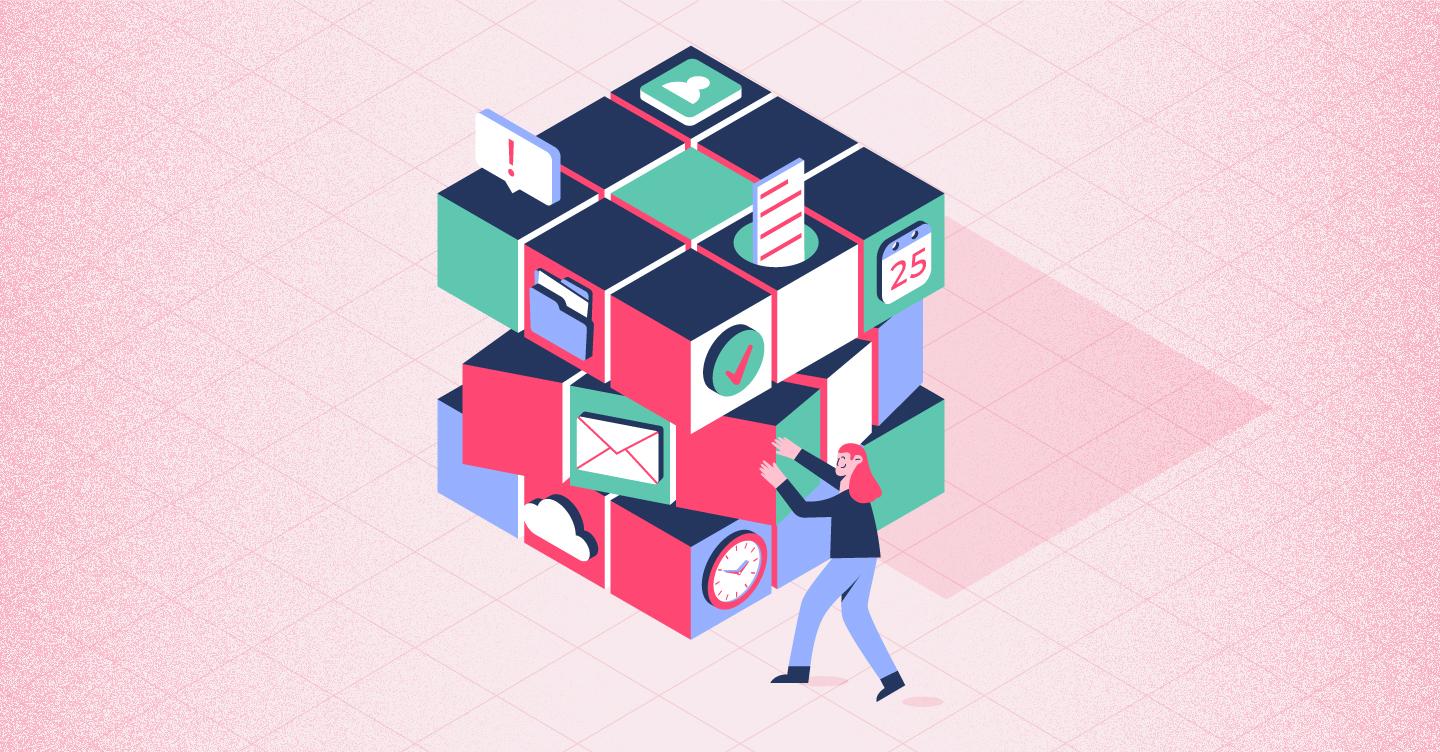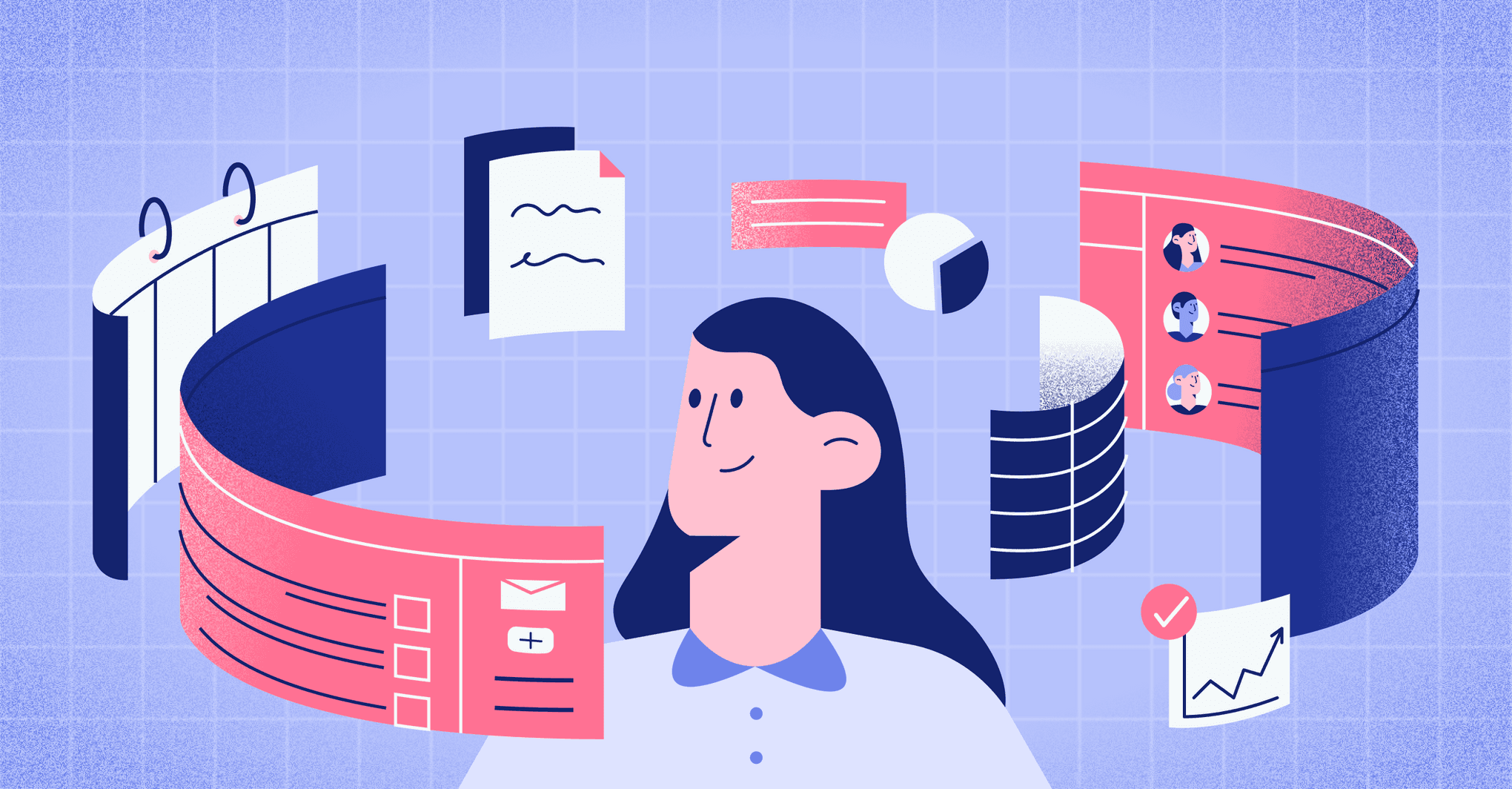Copper Staff
Contributors from members of the Copper team
Often, people associate upselling with an underhanded sales technique that tricks customers into spending more money than they want to (or need to).
Upselling has a bad rap, and it’s the sleazy salespeople of the world that have created it.
But let’s set the record straight: upselling is a sales approach that, when done right, can do great things for your business—and your customers. In fact, one company’s upsell strategy enabled them to triple their revenue.
Even better, it can actually help you build better relationships and boost customer lifetime value. Let’s look at why having a strong upsell strategy matters and how to do it without the ick factor.
What is upselling?
Upselling is a sales tactic where you offer a customer a higher price version of a product they’re already interested in. This could mean more features, better service, or just a little something extra.
For SaaS companies, that might look like plan upgrades. For e-commerce, it could be an extended warranty or an add-on that boosts quality. Whatever the case, the goal is to enhance the value the customer is getting.
By upselling to existing customers, you’re also saving on marketing and selling costs. In fact, one study of SaaS companies found that it costs $1.18 to earn $1 from new customers, while it only costs $0.28 to earn $1 through upsells. Un fact, a solid upsell strategy can increase customer lifetime value by 20–40%. Post-purchase upselling techniques have led to a 5.6% boost in average order value.
Bottom line? A smart, non-pushy upsell strategy not only increases your revenue—it helps your customers get more out of their purchases too.
Why upselling matters
- It builds deeper relationships.
- It increases customer lifetime value.
- It costs less than acquiring new customers.
According to the book Marketing Metrics, the probability of selling to a new prospect is only 5-20%. However, the probability of selling to an existing customer can be up to 70%.
Upselling techniques like these don’t just boost your average order value—they also make your business more sustainable.
If you want to build customer loyalty, increase lifetime customer value, and sell easier, it’s time to learn how to upsell.
Closely related is cross-selling: offering a different but complementary product.
Either way, it’s only effective if it’s relevant and helpful to the customer. Because upselling is a sales tactic that should build trust, not break it.
13 Upselling techniques that work without being pushy
1. Match your offer to the customer’s needs.
To create a successful upsell strategy, you need to start by tuning into your customer’s unique needs and goals. This isn’t about offering more just for the sake of it—it’s about offering the right more. A relevant upsell feels helpful, not pushy. Whether it’s a higher price tier with extra functionality or a service that saves them time, the key is knowing what they value most.
Use purchase history, behavior patterns, and conversations to tailor your upselling techniques. If a customer regularly maxes out a basic feature, it’s a perfect opening to suggest an upgrade that gives them more flexibility. The more personal your offer, the more likely they are to say yes.
In fact, personalization isn’t just a nice-to-have—it’s critical. According to research from Accenture, 91% of consumers are more likely to shop with brands that provide relevant offers and recommendations. That’s why a personalized upsell strategy not only improves conversion, but strengthens trust and loyalty.
2. Wait until they’re settled.
Timing is everything when it comes to upselling. Even the best upsell strategy will fall flat if it comes too soon. Before you make a pitch for a higher price tier or add-on, give your customer time to experience your product. Let them settle in, find their rhythm, and start to see some early wins.
This is especially true in SaaS, where onboarding is crucial. A smooth onboarding builds confidence and trust—two things you absolutely need if you're going to ask them to spend more. Once the customer feels that they’re getting value, they’ll be far more open to hearing how they can get even more.
This approach doesn’t just feel better, it performs better. Well-timed upselling techniques increase conversion and reduce churn, because the customer is making the decision from a place of satisfaction—not skepticism.
3. Solve real problems
The easiest way to turn an upsell into a yes? Solve a problem the customer already knows they have. This is where upselling techniques shine, not as flashy sales moves, but as thoughtful solutions.
Listen to your customers. What pain points are they voicing? Where are they struggling to scale, automate, or move faster? Then, use your upsell strategy to step in and help. Maybe it's a training add-on, a more advanced product tier, or a bundle of services that saves them time.
When your upsell feels like a helping hand instead of a money grab, customers are more likely to bite. It also reinforces your value as a brand that gets it—and them.
This kind of empathetic upselling not only increases the average order size, it boosts customer lifetime value by building stronger, more durable relationships.
4. Segment your customers
Not all customers want the same thing, and not all upsell techniques work across the board. That’s where segmentation comes in.
Group your customers by behavior, usage, industry, or company size. You can even segment by the type of problems they’re trying to solve. This way, each group gets an upsell strategy that feels tailor-made—not random.
Better yet, start by defining your ideal customer profiles (ICPs). These are the customer types who get the most value from your product—and who are most likely to respond to upselling techniques. From there, observe behavioral patterns: What do they engage with? Which features do they use most? Where do they tend to drop off?
This kind of segmentation isn’t just for internal notes. You can use it to power smarter email marketing campaigns, personalized outreach, and in-product upgrade prompts. For example, if you notice a segment of users always hits their feature limits, they’re primed for a higher price tier. If another segment frequently purchases two specific products, they might respond well to a bundle.
By targeting offers based on real behavior and aligning them with your ICPs, your upsell strategy becomes more than a guess—it becomes a proven, scalable approach to boosting customer lifetime value and increasing average order size.
5. Price it right
Price can make or break your upsell strategy. Even the most well-crafted offer can flop if the value doesn’t match the price—or if the price isn’t justified clearly enough.
Your higher price tier needs to feel like a steal, not a stretch. A good rule of thumb? Make sure the customer instantly understands what extra value they’re getting and why it’s worth it. Use comparisons, breakdowns, and tiered visuals to help clarify.
Another proven technique? Offer free shipping or add a time-limited discount to nudge customers off the fence. These incentives sweeten the deal and can increase your average order value in a snap.
Take inspiration from brands like GoDaddy, who offer steep discounts on long-term plans. Their upsell strategy is effective because it speaks directly to value-conscious customers who want more for less.
When priced right, your upsell becomes a “why not?” instead of a “maybe later.”
6. Use customer milestones.
Milestones aren’t just reasons to celebrate—they’re prime upselling opportunities. When a customer achieves something meaningful, they’re more open to investing further. It's one of the most organic upselling techniques out there.
Look for moments like hitting a usage threshold, completing a key feature, or even being a customer for 6+ months. These are perfect times to pitch an upgrade that helps them keep up the momentum.
Make it personal. Say, “Hey, congrats on reaching this milestone! Here’s how we can help you do even more.” This kind of recognition makes your upsell strategy feel supportive instead of one focused on sales.
In SaaS, this might mean offering an expanded feature set after a user maxes out their current tier. In e-commerce, it could be an exclusive bundle after a customer hits a spending threshold.
By timing your offers with positive momentum, you're more likely to get a yes—and build a deeper customer lifetime relationship while you're at it.
Get the latest from our blog every month
7. Add social proof
If your customer is on the fence, nothing builds trust quite like seeing how others have benefited from the same offer. In fact, 72% of consumers say positive testimonials and reviews increase their trust in a business. Ultimately, social proof taps into our natural instinct to follow the crowd—especially when we’re unsure.
That’s why a great upsell strategy doesn’t just focus on the product or service itself; it also includes glowing reviews, compelling testimonials, and stats that show real-world impact. For example, if you’re upselling a premium service tier, include a quote from a long-time customer who saw a 30% improvement in turnaround time after switching.
Case studies, before-and-after results, or even screenshots of happy customer feedback can go a long way. If possible, personalize the proof—show a similar customer demographic or industry, so the potential buyer sees themselves in the success story. The more relatable, the more persuasive.
8. Bundle wisely
For agencies and consultants, bundling services can feel like offering a shortcut to success.
Say you’re a brand consultant. Instead of just offering a one-time strategy session, bundle it with a visual identity package and a 30-day implementation follow-up. Suddenly, you’re offering transformation, not just advice.
Design agencies can bundle web design with conversion copywriting and basic SEO setup—so clients don’t just get a pretty site, they get one that performs. These bundled offers increase the perceived value, boost average deal size, and simplify the buying decision for the client.
Think like Adobe, but for client services: offer the tools and guidance they need to actually get results, not just check off boxes.
9. Focus on outcomes
When clients are deciding whether to upgrade or expand scope, they’re not asking for more features—they’re asking: how does this help me win?
So instead of pitching “weekly strategy sessions,” frame it as “you’ll get tailored feedback faster, so you can pivot quicker and capture opportunities while they’re still hot.” Don’t just sell more hours—sell the outcomes: faster launches, better-performing campaigns, fewer back-and-forths.
For example, Toggl Track—a time tracking tool popular with agencies—doesn’t focus on tracking hours for the sake of it. Instead, they highlight how visibility into team hours helps optimize workflow, spot scope creep early, and improve project profitability. The feature is time tracking. The outcome is higher margins.
You can take the same approach. Will your upgrade lead to smoother handoffs, faster turnarounds, or a stronger ROI? Focus on that. When clients see what they get instead of just what it includes, your upsell becomes an easy yes.
10. Upsell in context
Timing matters—and your client’s context matters even more.
Let’s say you’re a digital marketing agency. Instead of pushing a paid ad service during onboarding, wait until you’ve already helped the client boost their organic traffic. Now they’re more primed to scale—and a paid campaign is the logical next step.
Or maybe you’re a business coach. When your client finally has their offer and positioning locked in, that’s when you introduce an add-on service like email automation support or SOP creation.
Don’t interrupt. Show the value of the upgrade exactly when the client realizes they need it.
11. Know when to chill
Don’t push it. If your customer says no, respect that. Constant upselling is a sales tactic that backfires fast.
Instead, revisit the conversation later—maybe when they’ve grown or hit another milestone. Keeping the relationship intact is more important than scoring a single upsell.
12. Use email marketing to follow up
If a customer hasn’t purchased in a while, use email marketing to reintroduce them to what they’re missing—like a higher price tier with features they didn’t have before. Include reviews, FAQs, and a low-risk CTA to make it feel like an upgrade, not a push.
If you’re using Copper, this is a perfect moment to set up a Rekindle email automation. You can choose when and how often to follow up based on last contact, activity, or purchase—no spreadsheets, no guesswork. Copper’s automations let you send personal-feeling check-ins that keep your brand top-of-mind without sounding salesy. It’s smart, simple, and seriously effective for reactivating warm leads.
13. Add value with educational content
Educational content is one of the most underrated tools in your upsell strategy toolbox. Why? Because it empowers your customers. When you help people get more out of your product or service—whether through tips, guides, or how-to walkthroughs—you build trust and authority.
Think about it this way: your customer might not even realize they need a higher price tier or additional feature until you show them what’s possible. That’s where educational content like webinars, how-to videos, blog articles, and product walkthroughs come in. It’s not just about explaining features—it’s about showing real-world use cases, success stories, and practical tips that highlight the value of upgrading.
Educational resources also improve customer lifetime value by keeping customers engaged and confident in using your product. And when they feel supported, they’re more likely to invest in that next tier or add-on.
So don’t just sell—teach. When customers learn how to do more with what you offer, they’re more likely to want more of it. Build trust by sending resources that show how customers can get more out of their purchase—or why a higher price option makes sense long-term. Webinars, videos, and articles all add credibility to your upsell strategy.
Final thoughts
Upselling doesn’t have to feel pushy, slimy, or like you’re trying to squeeze every last dollar out of your customer. At its best, upselling is just smart, empathetic selling. It’s about identifying what your customer actually needs—and offering a solution that genuinely helps them reach their goals faster, easier, or with better results.
When you get it right, everyone wins. You boost your average order value, increase customer lifetime value, and unlock higher-tier offerings. But more importantly, your customer walks away thinking, “That was worth it.”
The key? Stay relevant. Make sure every offer feels timely and tailored to the customer’s current stage or challenge. Highlight the benefits—not the bells and whistles—and show the real outcomes they’ll gain. Follow up with helpful, well-timed nudges via email or in-product messaging. And yes, sometimes it’s as simple as offering a bundled deal, or covering shipping as a final nudge.
Upselling isn’t about pressure. It’s about clarity. Confidence. And customer care.
Because when your upsell is rooted in service—not just sales—it doesn’t feel like a pitch. It feels like a natural next step. And that’s the kind of strategy that doesn’t just convert customers—it keeps them coming back for more.






